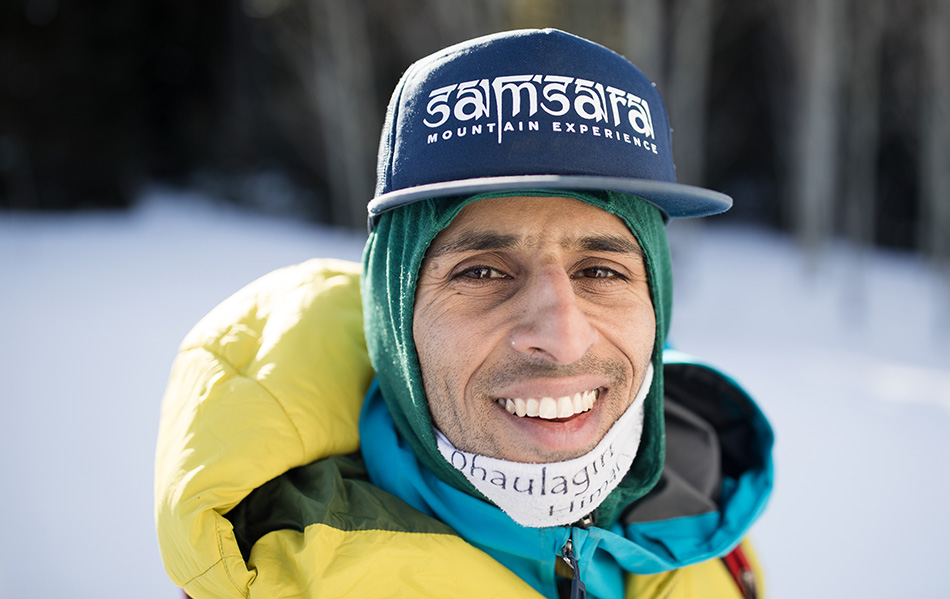EXUM FILES—PART 3: SKI TRANSITIONS IN TECHNICAL TERRAIN


Exum Guide Zahan Billimoria is a wiry billy goat of a mountaineer. Trim, quick and energetic, “Z” has a preternatural fluidity in the mountains, covering ground fast and moving with purpose. He was a member of the US Ski Mountaineering Team and has spent several of his formative years honing his skill set with several speed ascents and descents of innumerable Teton peaks. So, transitions and efficiency are his bread and butter. We finally got the father of two to stop long enough to share some thoughts on technical challenges when we set our sights on more complex backcountry skiing objectives.

It’s easy to get focused on the technical tools, the rope, the anchor—but none of that stuff keeps you safe if you shouldn’t be there in the first place. It’s essential to aspire to make the right call based on your observation of the world around you, your knowledge of the snowpack and the weather. If stability checks out, then step out cautiously.
By and large skiers aren’t dying because they used the wrong carabiner; the biggest risk to skiers and riders is the environment. Snow is an endlessly complex medium, ever-changing and dynamic. Ninety percent of my bandwidth in the mountains is consumed with being pre-occupied with stability. The technical stuff is really simple by comparison.

A rope is a simple and elegant tool that can provide a margin for safety in many situations that skiers and riders encounter. It could be managing a cornice, a start zone, testing the snow surface. If you are proficient with deploying the rope, you will do it more often. Keep the system simple; use the terrain to enhance your belay. Often you don’t even need a harness; a bowline knot around the waist might do the trick. When your run involves a technical solution, break out the kit early, possibly at the top of the run. You don’t really want to be taking your pack off at the anchor halfway down a run. It’s good to have your harness on, your leash ready—maybe even have the rope coiled around you, or stacked in your pack ready to deploy at the top of the run. This will shorten the time that you spend in the barrel of the gun fiddling around with gear.
Moving through complex terrain requires constant adaptation. At first you are skiing, then you may need to down climb, or rappel. Perhaps you are skinning, but the terrain becomes too confined and you need to switch to booting. All of transitional changes take time, so a quick little Houdini maneuver like holstering your skis under your pack strap enables you to move swiftly through tricky ground without the need to take your pack off, or hardly even stop.

As skiers, we find our anchors in undesirable places, like at the bottom of the run with the majority of the slope above us. Anchors aren’t safe places when they are under steep and often unsupported snowfields. So, we want to get in and get out. Quickly. If the first person is dialed they can roll into the anchor and set the whole scene up while they have room to work without being cluttered by the rest of the team and their skis. The first rider can check the anchor, thread the rope, and even rig the others’ devices. That way, as others come in, they don’t need to attach themselves to the anchor; they can just clip into their devices, and everyone can start descending without much wasted time. Sometimes, if the top person is rigged on their belay device, the two lower skiers can rappel on one single strand each—their ropes are pinned in place by the belay device of the person waiting at the anchor.

The first person has the bulk of the work, and has the most options. So, send the most experienced person down first. They can set the whole system up, while the rest of the team waits in a safe place. Once they are on rappel, they can scoot down the rope (approx 5-10’), tie a stopper knot below their device to “anchor” themselves and with the individual rope strands re-directed through the anchor, they can belay each person down, limiting the 2nd and 3rd skiers fall if they slip on the approach.
Keep your eye on the big picture. Steep couloirs aren’t places to hang around. When the last person finishes rappelling, they can touch down on the snow and keep rolling, meaning just ski down. They should have a knot in one end of the rope (assuming they were pre-rigging); when they hit the end of the rope the knot will catch in their belay device and pull the other strand through. They can slide down the couloir until they reach a safe pull out, dragging the rope over the snow until they get into a safe locale. Once established, they can start to put the rope away without unduly exposing themselves to the overhead hazard.
